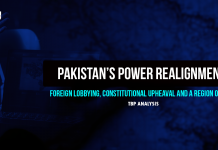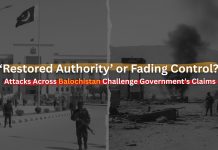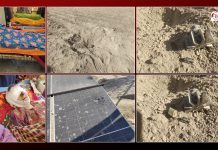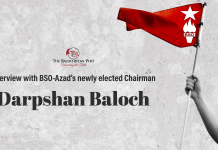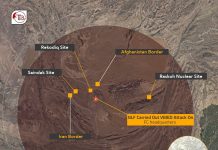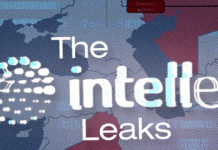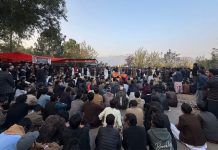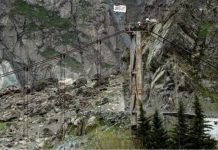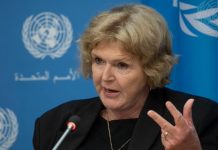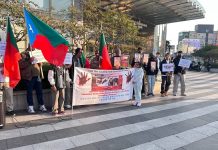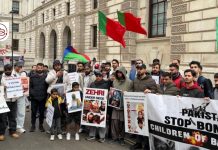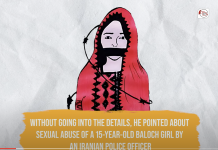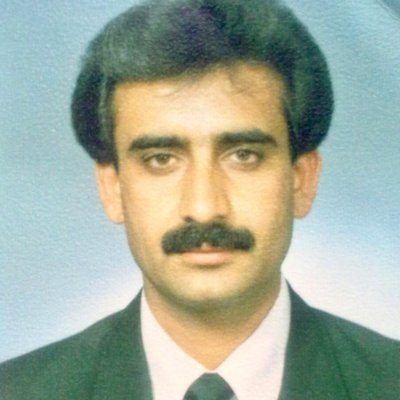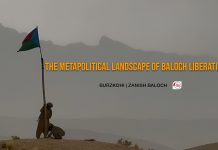A key pillar missing in Trump’s new strategy
Written by: Rahim Baloch
On August 21, 2017, the President of United State of America, in a speech, expressed his frustration on the protracted war in Afghanistan without a victory. He announced a new US strategy for Afghanistan, Pakistan and South Asia. The basic features of the new strategy can be identified as follows:
1-a shift from a timeline-based approach to one based on conditions,
2-integration of all instruments of US power — diplomatic, economic, and military — towards a successful outcome,
3-to lift restrictions on the US warfighter that previous administrations had placed upon them and extend authority for US armed forces to target the terrorists and criminals networks,
4- a shift from nation building to a pursuit and killing the terrorists,
5-to further extend strategic partnership with India,
6-to change approach how to deal with Pakistan which provides safe havens, assistance and funds to Taliban and other enemies of the U.S.A, her allies and partners.
From the speech of President Trump, one can conclude the main objectives of the new strategy are: to strip terrorists of their territory, cut off their funding, expose the false allure of their evil ideology, break their will, dry up their recruitments, keep them from crossing the U.S borders, eliminate and stop the resurgence of safe havens to terrorists, prevent nuclear weapons and materials from coming into the hands of terrorists, ensure an enduring and honorable outcome of war by defeating Taliban and bringing them on table for a long-lasting peace and stability in Afghanistan and in entire region.
Trump, in his speech, mentioned two worst threats to the peace and stability of the region and the entire world. One of those threats is tense relations of Pakistan and India — two nuclear armed states –, and the second is the aggregation of 20 U.S. designated terrorist organizations in Afghanistan and Pakistan, which is, the highest concentration point of terrorists in any region anywhere in the world.
Trump applauded India as a key partner and hoped India will provide more economic assistance and targeted development to the people of Afghanistan, pursue with US their shared objectives for peace and security in South Asia and the broader India-Pacific region. He criticized Pakistan for her dual and hypocritical role and said that they had been giving billions and billions of dollars to Pakistan and for its part Pakistan often gave safe havens to the agents of chaos, violence and terror who rest and refit for action in Afghanistan and elsewhere. He said that Pakistan’s policy had to immediately change.
Trump said that Pakistan had much to gain from partnering with US effort in Afghanistan and it had much to lose by continuing to harbor criminals and terrorists. He reminded Pakistan that it is time to demonstrate its commitment to civilization, order and peace.
Pakistan rejected the new strategy and claimed that she had made more sacrifices than the U.S. and any other country. Pakistan expressed her keen concerns over giving a broader role to India in the new strategy.
After promulgation of the new strategy, representatives of U.S. visited Pakistan at different levels and tried to win her favor. Commanders of NATO and US in Afghanistan also made statements on various occasions in line with the statement of trump with a view to get changed Pakistan’s strategy of sponsoring terrorism.
On December 29, 2017, the Trump administration announced that the U.S. will deny Pakistan military aid of security assistance from the Foreign Military Financing Fund (FMF) amounting to $ 255 million. In his first tweet in 2018, Trump wrote: “The United States has foolishly given Pakistan more than 33 billion dollars in aid over the last 15 years, and they have given us nothing but lies and deceit, thinking of our leaders as fools. They give safe heavens to the terrorists we hunt in Afghanistan, with little help. No more”.
Instead of giving positive signals for a change in its policy, Pakistan reacted angrily on the said tweet, summoned U.S. Ambassador David Hale to the Foreign Ministry, rejected all allegations levelled against Pakistan by Trump in his tweet and recorded a strongly-worded protest.
On January 4, 2018, State Department spokesperson Heather Nauret said that the US is suspending its entire security assistance to Pakistan until Pakistan took decisive action against groups such as Taliban that are destabilizing the region and targeting U.S personnel. However, she said the cut-off was not permanent and affected only military assistance.
An analysis of Trump’s new strategy for Afghanistan, Pakistan and South Asia reveals that it is partly correct and partly deficient. Reasons enumerated for protraction of war on terror are correct. Findings about Pakistan’s dual and hypocritical role in war on terror also seems based on correct appreciation of facts. Concerns over concentration of about 20 US designated militant organizations in the region and Pakistan’s giving them safe havens, assistance and funds is also on the mark, but concerns over a supposedly India -Pakistan conflict involving use of nuclear weapons seems more hypothetical than realistic.
Islamic extremism, militancy and nuclear weapons are two core instruments of Pakistan’s foreign policy. There is nothing with Pakistan worthy to offer world in its relations except the purposely cultivated fear of Jihadists and nuclear weaponry. The new US strategy suggests a policy of “carrot and stick” to compel and bait Pakistan for further and fair partnership to overcome the above mentioned threats. Such a policy will likely provide further space to these threats to grow stronger.
Pakistan’s response to the new US strategy denotes a failure of “carrot and stick” policy. After the announcement of the new US strategy, Pakistan, instead of being pressurized and defensive, emerged more offensive. After the promulgation of the new US strategy, Pakistan lifted the so-called house-arrest of the USA and UNO-designated terrorist Hafiz Saeed and released from prison Sufi Muhammad, father in law and mentor of Mulla Fazalullah, the leader of TTP. Sufi Muhammad is also responsible for sending thousands of Jihadists to Afghanistan to fight against US-NATO forces and Afghan allies.
Increased attacks in Kabul, Jalalabad and other parts of Afghanistan also seem to be a part of Pakistani response to the new US strategy. In fact, the US expectation to get a fair partnership of Pakistan for achievement of goals enumerated in the new US strategy is based on an unrealistic approach and hypothesis. A stable and strong Afghanistan and a broader role, in the region, for India are unacceptable to Pakistan. Such a situation is imagined by Pakistanis as fatal for their self-styled interests. Contrary to US, Pakistan wants a weaker and unstable Afghanistan acting under her influence as a satellite state. Pakistan also follows a policy of containing the power and influence of India in the region and beyond because Pakistan has enmity and landed disputes with both of its neighboring India and Afghanistan. In fact, it is the core pillar of Pakistan’s self-styled security doctrine and Pakistan army and security establishment can’t afford a departure from that. Pakistan’s whole policy, its strategy, alignment and enmities revolve around this doctrine or belief.
For the sake of argument, suppose Pakistan succumbs to the US and international pressure, she will still not take any such action which might be harmful to Jihadists or be beneficial to India or Afghanistan. Pakistan will still try to deceit the US and its allies by taking claptrap and theatric measures. For a fair, strong and enduring alignment it is necessary the partners shouldn’t only share common interests but common goals and values too. In US-Pakistan alignment that basic elements are missing.
A study of Pakistan-US alignment history too seconds this fact. In 1950s, Pakistan joined US sponsored international organizations SEATO and CENTO, but both allies didn’t share common goals. The US aim was to contain the influence of USSR in the Middle East, West Asia and Asia Pacific but Pakistani goal was to obtain military and economic aid and assistance to build its military might and economy against her self-styled enemies — India and Afghanistan.
In 1980s, Pakistan again joined the US but not for any shared goals.US efforts aimed at to contain and defeat USSR in Afghanistan but Pakistani goals were to get rid of international isolation which it was facing due to Martial law and her nuclear program, to destabilize and weaken Afghanistan for securing her western border, to receive US sophisticated arms and assistance to equip its army against India, to get relaxed sanctions on its nuclear program and, to get economic aid and opportunities. Similarly Pakistan joined US war on terror in 2001just to avoid an immediate confrontation with a furious USA, to harbor and protect hardcore leadership of Taliban, Alqaeda, Lashkar-e-Taiba and its other proxies in the region and globe, to get relaxed sanctions and isolation which she was facing after experiments of nuclear bombs in 1998 and Martial law of 1999, to get US economic and military aid and assistance, sophisticated weaponry and modern technologies related to intelligence gathering and building war fight capability.
Similarly US and Pakistan don’t share any values. US champions the liberty, democracy and secularism while Pakistan professes an extremist approach of Islam as its ideology. Democracy and secularism are deemed not mere as un-Islamic but anti Islam values or way of life. Dictatorship is glorified; Hindus, Jews and Christians are portrayed as ultimate enemies. Subjugation of whole globe by Muslims through Jihad and establishment of an Islamic caliphate over the world is the core pillar of its ideology. Nuclear weaponry and Islamic militants/Jihadists are deemed as crucial means for achieving the goal of a global Caliphate. Pakistani state narrative, media, curriculum and madrassas networks are employed to promote that belief.
Now the question arises what is the missing pillar or element in the proclaimed new US strategy for Afghanistan, Pakistan and South Asia? The answer is an Independent Balochistan.
Ignoring the Baloch freedom movement, sacrifices of Baloch nation for the achievement of an independent Balochistan is fatal to the new US strategy. It is Balochistan which is situated at the junction of Central, South and West Asian regions. The shortest land routes from the sea to Afghanistan and Central Asian region pass through Balochistan.
It is also the Balochistan seaports that provide nearest sea routes to Middle East, Red Sea and onwards. The seaports and land routes of Balochistan also provide safe passage to India for Afghanistan and Central Asian region.
Balochistan also is rich in natural minerals and sea resources. It is the crucial strategic location and natural resources of Balochistan that motivated the greedy founding fathers of Pakistan to forcibly occupy the country in 1948 in contradiction to their promise, commitment and agreement with the Baloch government.
It is the crucial location of Balochistan which also induced China to engage in the CPEC, build roads, seaport, airport and a military base in Gwadar which will enable Chinese to have easy access to West Asia, Middle East, Red sea region and onwards.
It will also enable China to control the sea route in the Gulf of Baloch, Indian and Arab Sea as well as strengthen its grip in the occupied Uyghur region.
Yet’, it is only the Baloch freedom movement which is resisting the CPEC and other expansionist schemes and desires of China. An independent Balochistan will also pave the way for establishing civilian supremacy, religious tolerance and democracy in Pakistan, denying safe havens and patronage to terrorists which will culminate in the defeat and evaporation of Islamic extremism and Jihadist forces.
Contrary to their neighbors, the Baloch people share democratic and secular values with the civilized nations and have a longstanding tradition and history of religious tolerance which will be helpful in elimination of Islam’s extremist and Jihadist version in the adjoining regions.
In view of this discussion, it seems inevitable for the US to revisit and redefine its new strategy which should exclude Pakistan as a partner with its present structure and include support for a sovereign, secular and democratic Balochistan.
Rahim Baloch is a senior Baloch politician, he tweets at @RahimBalochh

